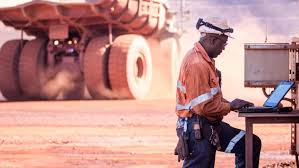Brandon Craig, BHP’s Vice President Maintenance, Maintenance Centre of Excellence reports: “We have over 3,000 machines in our operations, from trucks the size of houses to shovels that move millions of tonnes of material every year. When equipment fails it can put our people at risk, disrupt production, increase costs and reduce our ability to provide resources to customers. So, maintenance is a priority, and we spend $3.5 billion a year on the upkeep of our plants and equipment.
“BHP has created the Maintenance Centre of Excellence to partner with our operations to deliver safe, sustainable improvement in our equipment performance. The Centre leverages BHP’s scale to draw on the deep expertise, data and systems we hold across our business to reduce cost, cut unplanned downtime, improve production and ensure our equipment is safe and reliable for our people.
“Over the last 18 months we’ve formed a team of data scientists to examine how we can predict problems and improve the reliability and uptime of our equipment.
“The team uses experience from outside the resources industry to find ways to improve our approach. For example, Boeing developed a tool that analyses real time black box data from aircrafts in-flight to predict what maintenance they’ll need when they land. This is used by airlines to prevent cancellations and ensure equipment is in the right place at the right time. We’re developing similar systems to improve BHP’s maintenance.
“Our teams have developed algorithms that predict how a piece of equipment is likely to fail and when to best schedule preventative work.
“We use over 780,000 different kinds of spare parts and our analysis can better inform how we buy them, preventing delays and unnecessary spending. The team is also working with our operations to determine how they best time routine maintenance to minimise disruption to production.
“The results have been impressive. We analysed 5.6 million data points gathered from 20 shovels and identified how preventative maintenance could stop the risk of gantry and structure failures. The team also used data from 300 haul trucks to develop new maintenance strategies, improve supply chain management and set operating limits for how the vehicles are used in the field. This has improved availability and reduced costs by a projected 20 per cent across the remaining life of the fleet.
“The number of variables that influence the performance of an individual piece of equipment made it very difficult to do this sort of analysis before these systems were developed. Operator behaviour, weather conditions, machine usage and maintenance history all affect how a truck or shovel performs. Maintenance plans used to be developed on a site-by-site basis. Now we can draw on data from across the company and update them more frequently.
“The more data these systems are fed, the more they learn and the better performance becomes. BHP’s combination of large operations and standardised equipment, processes and technology are a critical advantage in the continuous improvement of their forecasts.
“Of course, these systems are only as smart as the people that use them. As they become more common they will enable a step change in safety, equipment availability and performance.










